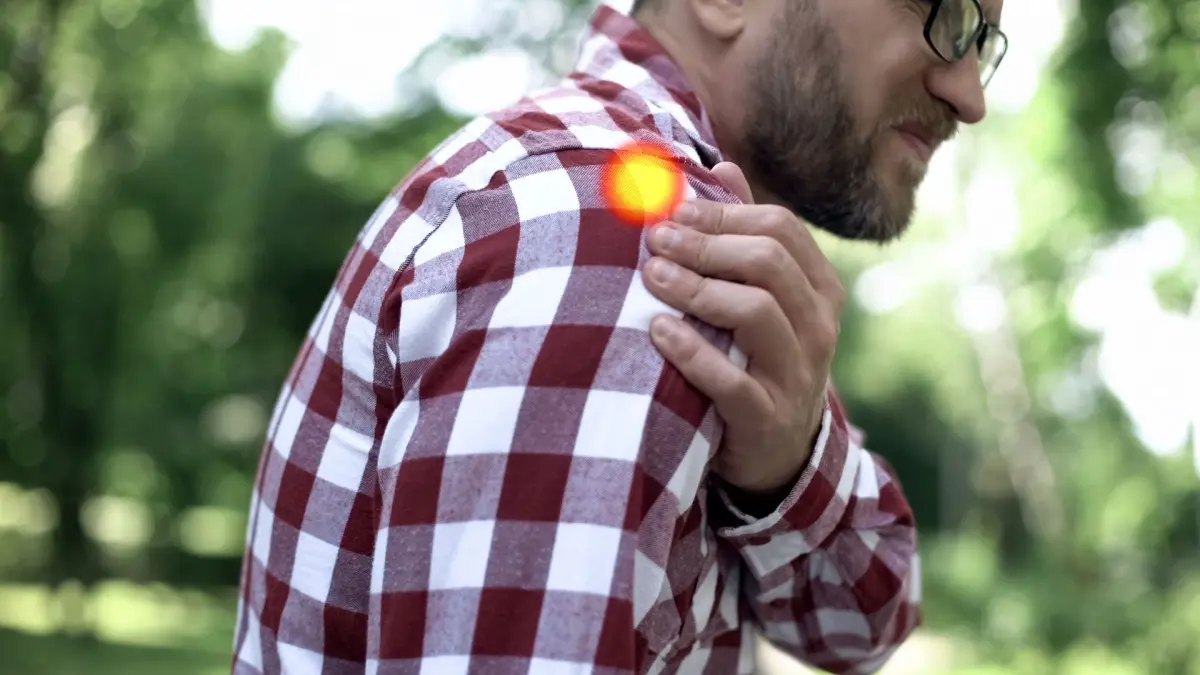A stress fracture is a small crack within a bone. However, unlike acute fractures, which occur from a sudden injury, stress fractures gradually develop over time and are common among athletes, runners, and individuals with physically demanding lifestyles. These tiny,...
Tendons are tough, fibrous tissues that connect muscle to bone and play a critical role in our movement, from helping us swing a tennis racket to allowing us to lift groceries or climb the stairs. But for all their strength and flexibility, tendons are also...
Thumb twitching, medically referred to as fasciculation, occurs when small muscles in the hand contract involuntarily. While it may feel like something serious is going on, the truth is that this twitching can be triggered by a wide range of causes, from not getting...
How to Manage Shoulder Impingement Without Surgery

Shoulder pain can affect much more than just our comfort. It can limit our ability to pick up our children, carry groceries, or even reach for something on a high shelf. If you’ve been struggling with nagging shoulder pain, there’s a strong possibility it may be due to a condition called shoulder impingement.
Shoulder impingement occurs when the tendons of the rotator cuff become irritated and inflamed as they are pinched between the top of the upper arm bone (humerus) and the shoulder blade (scapula). This can lead to persistent discomfort, especially when lifting the arm or performing overhead activities. Repetitive motions, poor posture, and weak muscles are some of the most common culprits of this condition.
While shoulder pain can feel overwhelming, the good news is that many individuals find relief through non-surgical treatments. Below, our orthopaedic specialists explore a variety of conservative shoulder impingement options that can help you return to a pain-free life.
Rest and Activity Modification
In many cases, shoulder pain can be your body’s way of saying “slow down.” For this reason, one of the simplest yet most effective ways of managing shoulder impingement without surgery is by giving the shoulder adequate rest. This doesn’t mean total inactivity but rather avoiding movements that aggravate the pain, such as lifting, pushing, or performing overhead activities.
Changing the way you perform certain tasks can also be a game-changer. For example, if you’re an athlete or have a physically demanding job, working with a coach or physical therapist to adjust your technique can reduce further strain on the shoulder.
Physical Therapy
Physical therapy is one of the most trusted non-surgical options for shoulder impingement. This is because a skilled physical therapist will develop a personalized plan that stretches tight muscles, strengthens weak ones, and improves your posture.
When treating shoulder impingement, therapists often focus on strengthening the rotator cuff and scapular stabilizers, which can help reduce pressure in the subacromial space. It’s important to note that consistency is key here. With dedication to your prescribed exercises, you could see significant improvements in pain and function within just a few weeks. Of course, if you slack off on your exercises, you could prolong your pain and even make the condition worse.
Anti-Inflammatory Medications
Sometimes, a little pharmacological help goes a long way. Over-the-counter nonsteroidal anti-inflammatory drugs (NSAIDs), such as ibuprofen or aspirin, can help reduce inflammation and pain, making it easier to participate in physical therapy and go about your day.
These medications are generally safe for short-term use, but it’s essential to consult with your healthcare provider, especially if you have other medical conditions or take medications that may interact with NSAIDs.
Corticosteroid Injections
If physical therapy and medications aren’t providing enough relief, a corticosteroid injection might be recommended as part of your conservative treatment plan. Administered directly into the subacromial space, these injections can quickly reduce inflammation and ease pain.
However, it’s important to note that while corticosteroid injections can provide temporary relief, they do not address the underlying causes of shoulder impingement. As such, they should be used in conjunction with physical therapy for the best results.
Icing
Some find it helpful to return to the basics. Icing is a time-tested non-surgical option for shoulder impingement that can help you manage pain and reduce inflammation. Apply ice packs for 15-20 minutes once or twice a day to enhance the overall effectiveness of your recovery plan. Remember to place towels or cloths beneath the ice packs so that they do not directly touch your skin.
When Surgery May Be Recommended
Though many shoulder impingement cases improve with non-surgical treatments, there are some instances where surgery may become necessary. For example, if conservative treatment options fail to provide relief after several months, or if imaging reveals a more severe problem such as a rotator cuff tear, surgery may be considered. The good news? Even most surgical procedures for shoulder impingement are minimally invasive and followed by a structured rehabilitation program to help you get back on track quickly.
Find Relief From Shoulder Impingement at Premier Orthopaedics
At Premier Orthopaedics, we understand how deeply shoulder pain can impact your quality of life. Our friendly and knowledgeable shoulder care team is here to help you explore all your non-surgical options for shoulder impingement and will design a personalized plan that reflects your goals and lifestyle.
If you’re ready to find relief from shoulder pain and get back to doing what you love, make an appointment with Premier Orthopaedics today. A specialist located conveniently near you will work with you to restore your shoulder health — without the need for surgery whenever possible.
